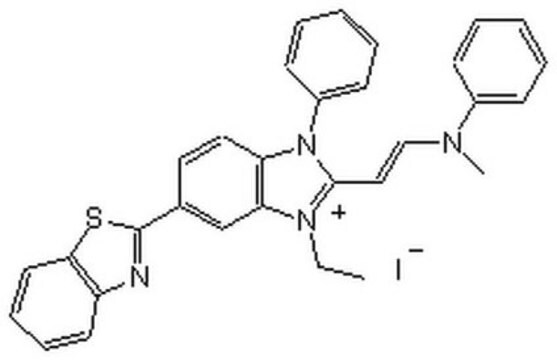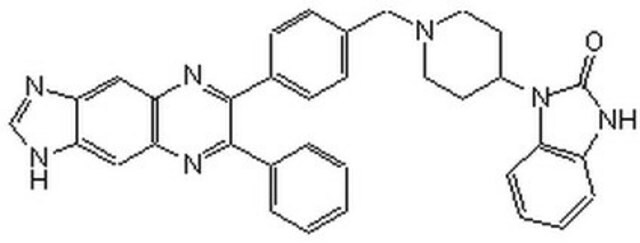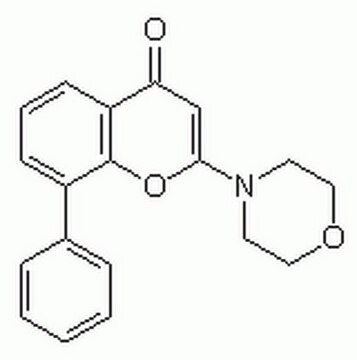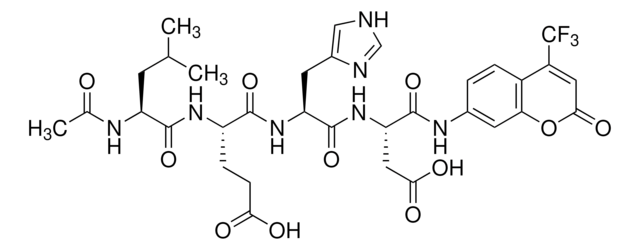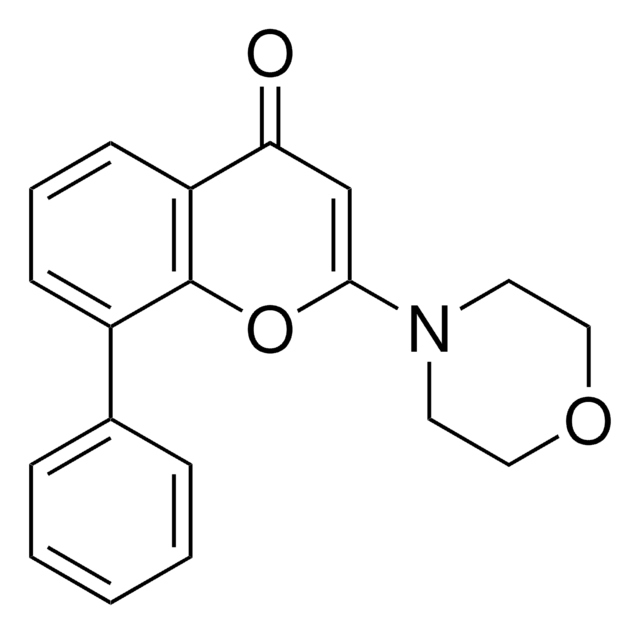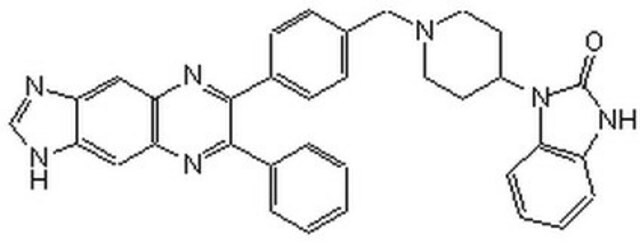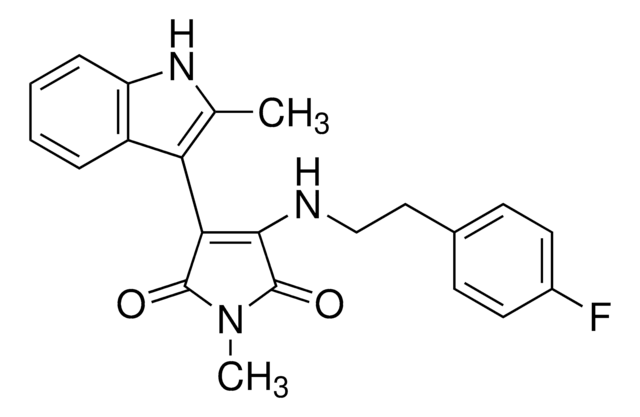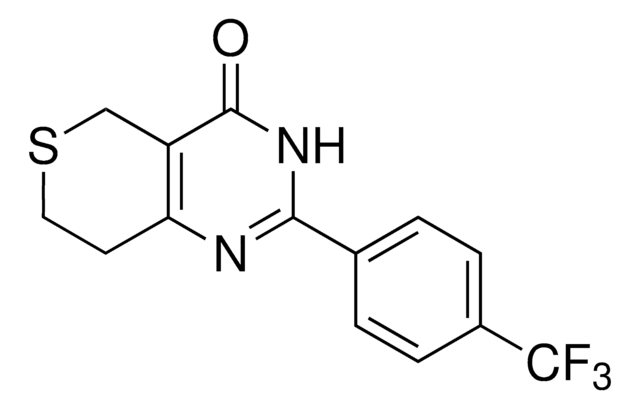A6730
Akt1/2 kinase inhibitor
≥98% (HPLC)
Synonym(s):
1,3-Dihydro-1-(1-((4-(6-phenyl-1H-imidazo[4,5-g]quinoxalin-7-yl)phenyl)methyl)-4-piperidinyl)-2H-benzimidazol-2-one trifluoroacetate salt hydrate, Akt Inhibitor VIII trifluoroacetate salt hydrate, Akti-1/2 trifluoroacetate salt hydrate
About This Item
Recommended Products
Quality Level
Assay
≥98% (HPLC)
form
powder
color
yellow
solubility
DMSO: ≥10 mg/mL
originator
Merck & Co., Inc., Kenilworth, NJ, U.S.
storage temp.
2-8°C
SMILES string
[H]O[H].OC(=O)C(F)(F)F.O=C1Nc2ccccc2N1C3CCN(CC3)Cc4ccc(cc4)-c5nc6cc7nc[nH]c7cc6nc5-c8ccccc8
InChI
1S/C34H29N7O.C2HF3O2.H2O/c42-34-39-26-8-4-5-9-31(26)41(34)25-14-16-40(17-15-25)20-22-10-12-24(13-11-22)33-32(23-6-2-1-3-7-23)37-29-18-27-28(36-21-35-27)19-30(29)38-33;3-2(4,5)1(6)7;/h1-13,18-19,21,25H,14-17,20H2,(H,35,36)(H,39,42);(H,6,7);1H2
InChI key
CRRPFKCJZALCLQ-UHFFFAOYSA-N
Application
Biochem/physiol Actions
Features and Benefits
Storage Class Code
11 - Combustible Solids
WGK
WGK 3
Flash Point(F)
Not applicable
Flash Point(C)
Not applicable
Choose from one of the most recent versions:
Already Own This Product?
Find documentation for the products that you have recently purchased in the Document Library.
Customers Also Viewed
Articles
We present an article about how proliferating cells require the biosynthesis of structural components for biomass production and for genomic replication.
Protocols
Sigma-Aldrich offers many products related to PKB/Akt for your research needs.
Related Content
Discover Bioactive Small Molecules for Kinase Phosphatase Biology
Our team of scientists has experience in all areas of research including Life Science, Material Science, Chemical Synthesis, Chromatography, Analytical and many others.
Contact Technical Service